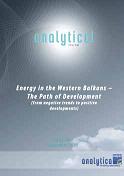Towards Higher Energy Efficiency: Greece Case
Towards Higher Energy Efficiency: Greece Case
Author(s): Ksenia PetrichenkoSubject(s): Economy
Published by: Аналитика Тинк-тенк Организација
Keywords: energy efficiency; Greece; tertiary sector
Summary/Abstract: Once the developmental path has been chosen by a country it is very difficult to change it, even for more efficient one, because of accompanying costs and established behavioral patterns (Altman 2000). The chosen path or solution might be “locked-in or become a permanent or a stable equilibrium” (Altman 2000). These ideas of path dependency can be implemented to energy efficiency development of a country. The improvement of energy efficiency usually associated with reduction of energy use by means of implementation of more advanced technologies. In this regards once a certain technological mix has been accepted in an economy, it is hard for a market to switch to another technology, as it is, usually, involves additional costs (David 1985 and Arthur 1989). It illustrates the key obstacle for energy efficiency improvement. To overcome this disadvantage the market has to transform towards higher energy efficiency. This process is hindered by certain barriers to energy efficiency. To reduce the barriers policy instruments, aimed at increasing energy efficiency, have to be implemented. In this paper the status of bypassing path dependency by means of EE policy development in Greece is considered by analyzing energy intensity of tertiary sector, household energy efficiency index and effectiveness of ongoing and planned policy instruments. On this basis the conclusion on whether the market transformation is taking place in Greece’s building sector is made.
Journal: Analytical
- Issue Year: 2010
- Issue No: 06
- Page Range: 63-80
- Page Count: 18
- Language: English

